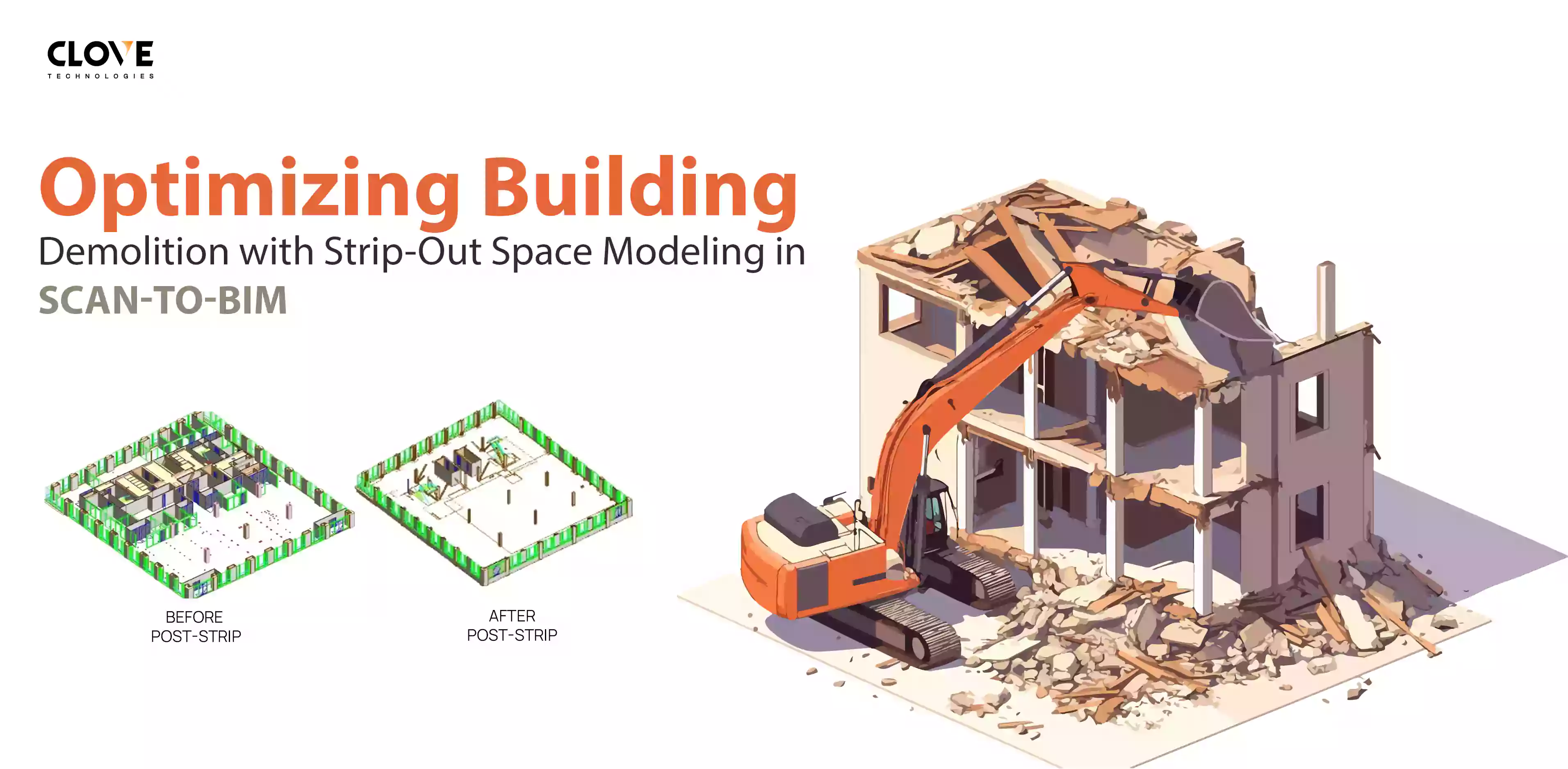Updated on:
Dec 29, 2024
5.0
153
13

Strip-Out Space Modeling in Scan-to-BIM
Demolition is an essential stage in the lifecycle of built environments that requires
careful planning to guarantee environmental impact, cost effectiveness and safety. The use
of antiquated paperwork in traditional procedures frequently results in inefficiencies and
safety hazards. Scan-to-BIM technology which provides incredibly accurate and
comprehensive digital representations of existing structures is a game-changer. In this
context strip-out space modeling promotes waste reduction and resource allocation by
enabling detailed planning and simulation of demolition procedures.
A Complete Guide to Strip-Out Space Modeling:
The process of creating intricate 3D models of areas and materials intended for
selective demolition is known as "strip-out space modeling." Its main goal is to locate
and separate parts like fixtures, partitions, mechanical systems, and reusable
materials. This procedure involves:
Data Acquisition:
Utilizing laser
scanning, photogrammetry, or other 3D scanning techniques to capture the
as-built conditions of a structure.
Development of Models:
Transforming Point Cloud Data into models that classify materials and structural
components and are compatible with BIM.
Demolition Simulation:
Combining Structural analysis and material inventories to model the strip-out procedure
in a BIM setting.
The Role of Strip-Out Space Modeling in Demolition Planning
Scan-to-BIM is the process of capturing current building conditions using 3D
scanning technologies, including LiDAR.
After that the point cloud data is transformed into BIM models that accurately depict
the geometry and constituent parts of the building. For demolition projects where
precise knowledge of the building's structural and material makeup is essential this
procedure is very advantageous.
A digital twin of the structure is provided to stakeholders through the integration of
Scan-to-BIM into demolition planning, allowing:
Improved Accuracy:
Scan-to-BIM reduces uncertainty during demolition planning by ensuring precise
documentation of existing conditions. This accuracy reduces the possibility of nearby
places suffering structural harm.
Reduction of Waste and Sustainability:
This method encourages sustainable habits through the inventory and classification of
resources for recycling or reuse. Finding items that can be salvaged promotes circular
economy efforts and lessens the amount of waste that ends up in landfills.
Cost Efficiency:
Thorough planning and simulation maximize the use of personnel and equipment by lowering
the possibility of unforeseen costs. Finding reusable materials also helps to defray
some project expenses.
Security Enhancement:
Strip-out modeling ensures worker safety and regulatory compliance by enabling
sophisticated visualization of hazardous zones and the scheduling of demolition actions.
Conclusion:
For businesses trying to cut expenses, boost productivity, and gain access to specialist
knowledge, outsourcing BIM services can be revolutionary. To find out if outsourcing
fits with your company's objectives, it's important to balance the benefits and
drawbacks.
You may take advantage of outsourcing's advantages while reducing any potential
drawbacks by selecting a trustworthy BIM outsourcing provider and keeping lines of
communication open.
Discover more of our innovative blogs

Scan to Bim
Scan to Bim
Navigating the Future of Construction: Converting Point Clouds into BIM Models

Scan to Bim
Scan to Bim
Building Beyond Limits: The MEP BIM Revolution

Scan to Bim
Scan to Bim
The Power of BIM with Revit: Revolutionizing the Construction Industry
Let's Talk
Let’s discuss your requirements and see how our expertise can help on your next project.
Let's Get Started
Let's Get Started